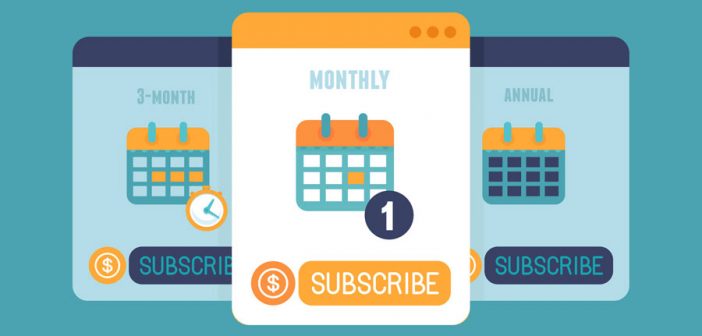As publishers turn to subscription and donation models, Ben Barokas, Sourcepoint CEO, looks at the pros and cons. Ultimately, it’s about consumer trust, choice and mutual value, he says.
With Apple’s ’Netflix for news’ service and major titles such as New York Media embracing paywalls, subscription and donation models are becoming an increasingly common feature of the publishing landscape. Yet it remains to be seen how important their role will be in the industry’s future.
While they bring multiple benefits – including extra revenue and a direct link to audiences – these monetization mechanisms must be handled carefully. Consumers still want to be in the driving seat when it comes to how they choose to support content. And that means publisher offerings must be centered on choice.
The rise of user funding
Subscription services aren’t new but paid models are enjoying a significant revival. In part, this is due to an increasing focus on quality. With 64% of Americans concerned about fake news, there is a growing appetite for trustworthy content, and subscriptions offer a direct line to high-grade, reliable content.
But it also has to do with rising audience demand for personalization and value. In the age of rising connectivity, where the majority (77%) of consumers own a smartphone, choice and personalization are expected to be at the heart of all digital experiences. So it follows that consumers have become more interested in the tailored interactions and unique value subscriptions bring. It could be argued that paid-for models offer publishers a clear and simple way to make consumers more aware of the online value exchange. Where once online ads (e.g. banner and side-bar ads) meant audiences were unknowingly funding content with their attention, users are now openly asked to make payments or contributions to maintain the production of premium content.
Are these models sustainable?
From the publisher perspective, taking the paid-for approach comes with both positives and negatives. The most obvious benefit is yield. With audiences making financial contributions, publishers have revenue security beyond digital ads or investment. And there are plenty of examples to show that subscriptions are turning a healthy profit – subscription revenues for The New York Times reached $1 billion in 2017, accounting for 60% of its total earnings, and British newspaper The Guardian recently announced it had raised $130 million from reader contributions in a single year. Plus, extra income can boost market confidence – companies with a subscription model are valued up to 3x higher than those driven by one-time sales.
Secondly, there is the benefit of enhanced consumer relationships. Using insight collected at the point of registration, publishers can offer experiences that are customized to the needs or interests of particular users: be that via curated content selections, exclusive offers or a tailored interface. By doing this, publishers can develop closer ties with subscribers that earn individual confidence and loyalty; studies show 95% of customers remain loyal to brands they trust. And as an added bonus, these deep connections can also increase the likelihood individuals will give publishers consent to access data, helping them to comply with increasingly robust privacy regulation, while continually refining services.
A potential downside could be publishers creating friction with their user base when asking for payments. For example, those who are not prepared to pay for previously ‘free’ content may feel excluded by a complete switchover to paid-only access. Similarly, requests for donations might cause frustration by disrupting consumer experiences as they try to engage with content, ultimately driving users to bounce. That’s not to mention the instability of voluntary contributions as a funding source; there are no guarantees of ongoing funding and contribution amounts are unknown. However, this only serves to highlight the importance that user choice can play in the content ecosystem – allowing consumers to identify the best value exchange for themselves.
Looking ahead
The way publishers monetize content is constantly changing; to align with shifts in audience behavior and new technologies. Right now, the application of international data law, potential national legislation, and greater awareness of the need for refocus on user-centricity, means the industry is increasingly reconsidering subscription and donation models.
Ultimately, publishers must ensure audience relationships are built on trust and choice. And an essential element of achieving this is giving individuals the freedom to determine their preferred funding method by offering a range of options, not just subscriptions. By providing adaptable ways of supporting content, publishers can win audience trust and forge flexible bonds based on mutual value.
–
This article first appeared in www.warc.com
Seeking to build and grow your brand using the force of consumer insight, strategic foresight, creative disruption and technology prowess? Talk to us at +9714 3867728 or mail: info@groupisd.com or visit www.groupisd.com




